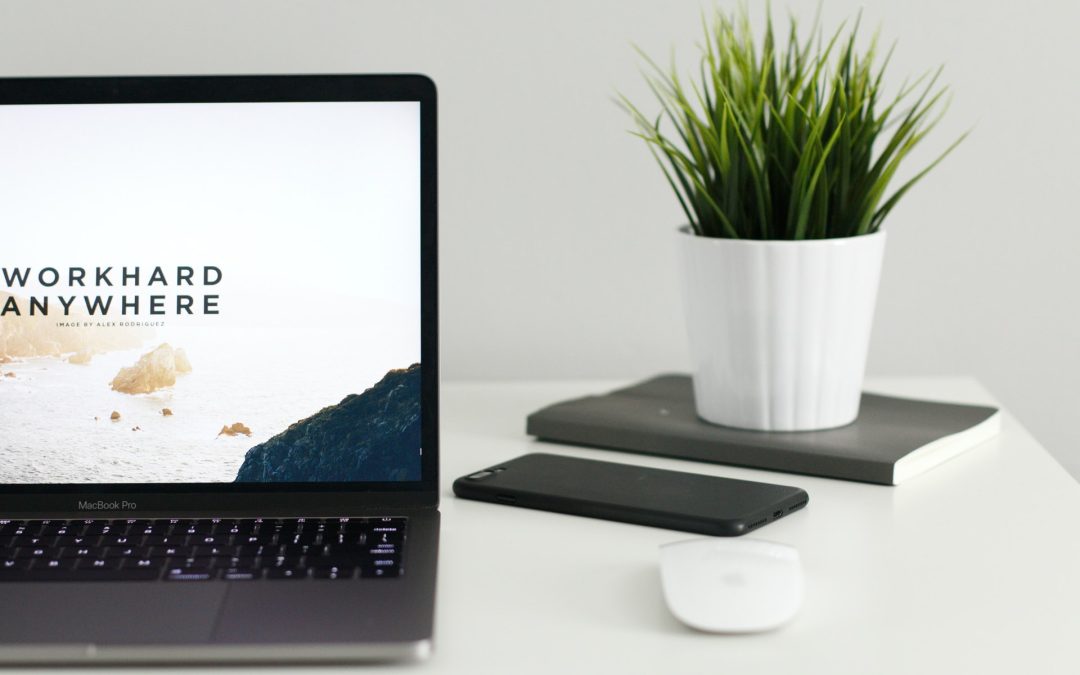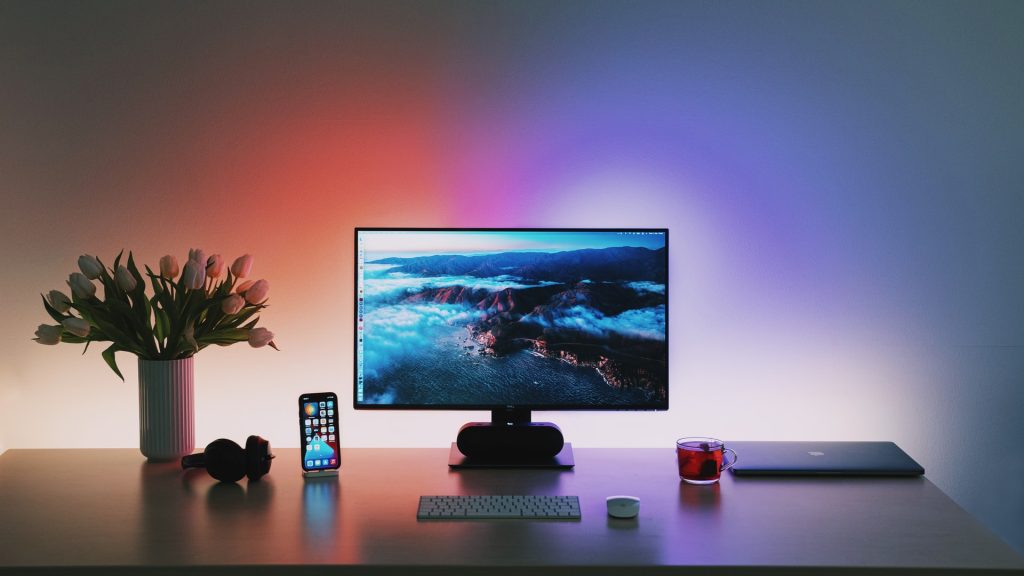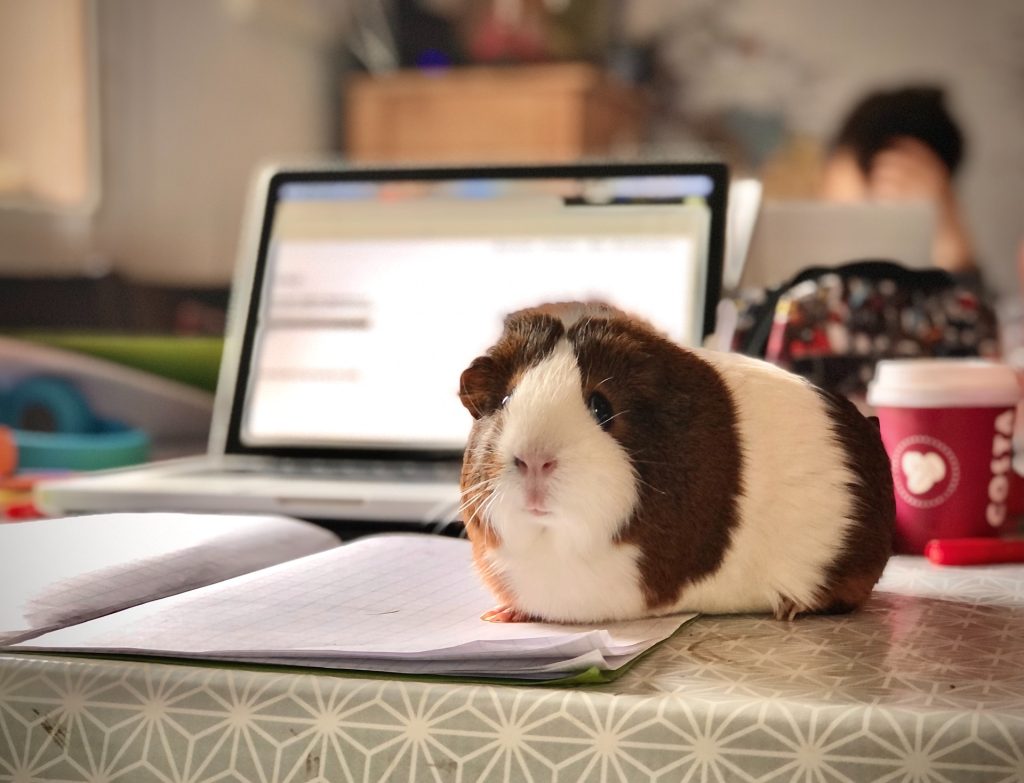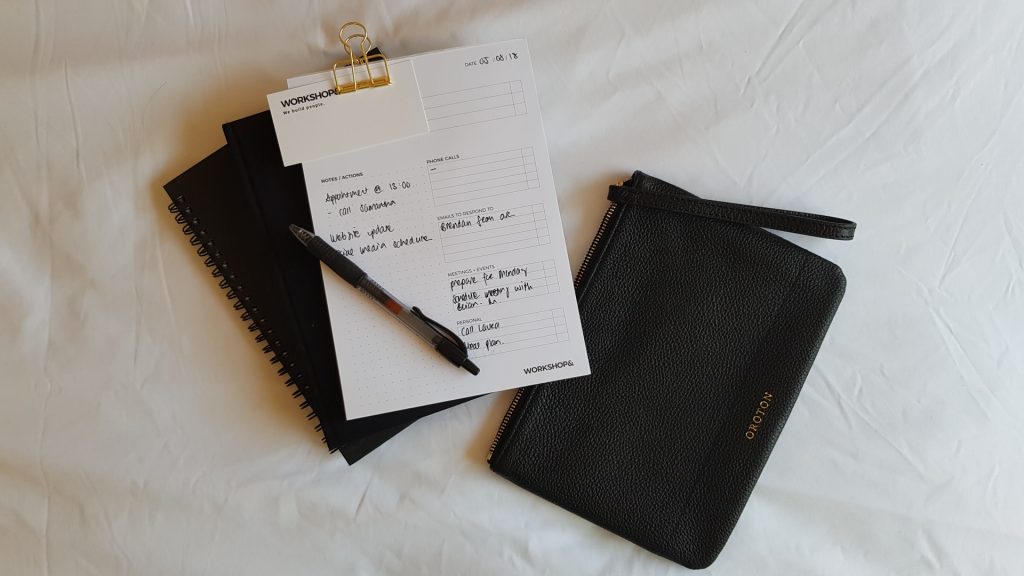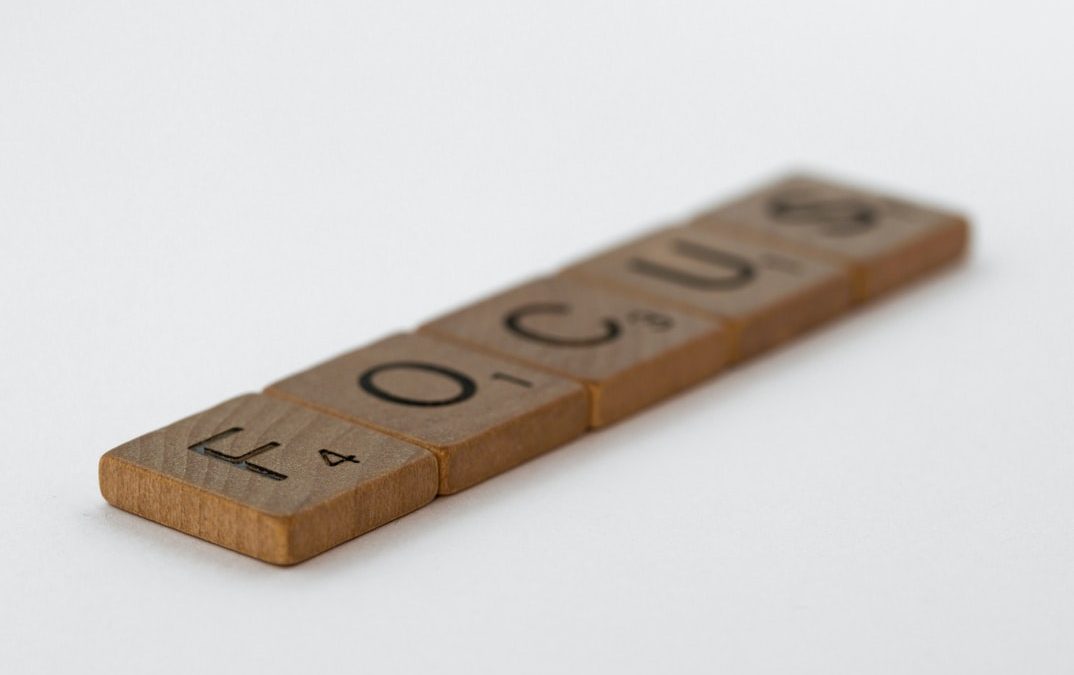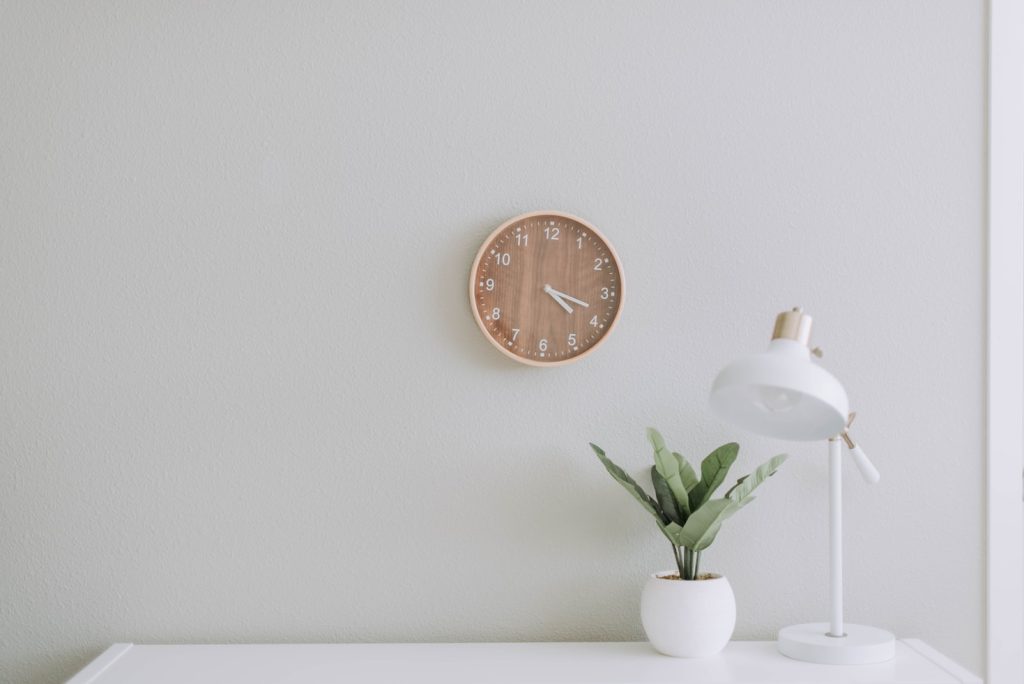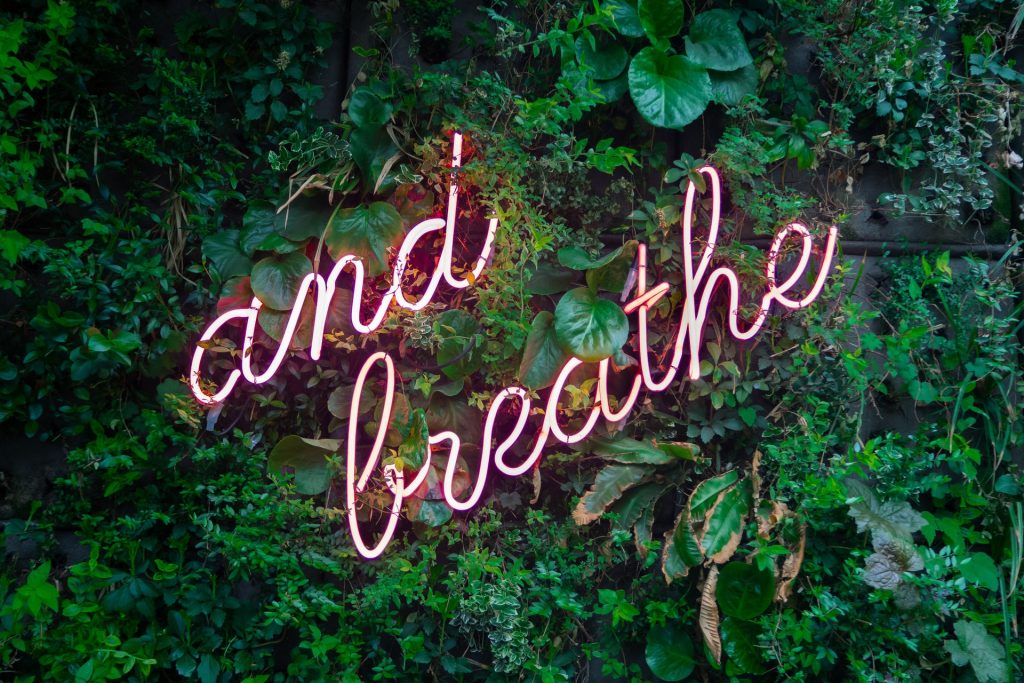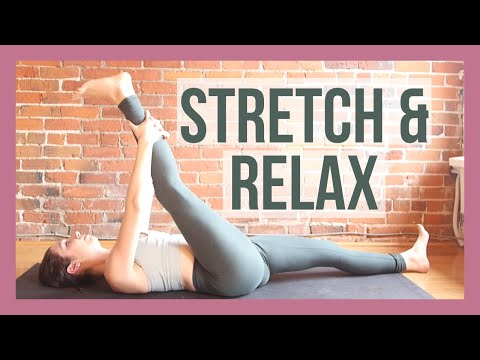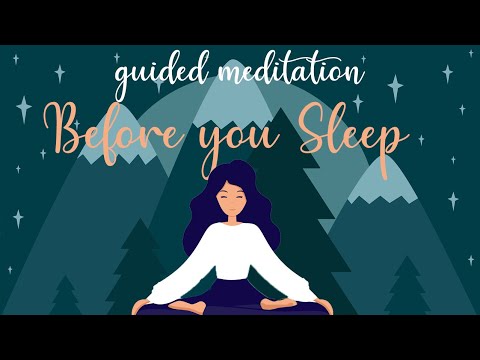
by Michael DeFelice | Last updated Mar 18, 2023 | Health and Wellness |
Candle gazing, or candle meditation, is a peaceful, almost surreal way to meditate while staring at the flame of a candle. If you’re ever stared at a fire and become lost in a type of trance, this is the same concept.
And that’s one of the key benefits of candle meditation for me.
When I place out meditation candles, I know that I will be able to focus on the flame rather than space out and fall asleep. Unfortunately, for a long time, when I tried meditating, I would fall asleep. However, my candle meditation experiences have changed that.
Candle meditation provides a focal point that keeps your attention.
Anyone interested in the benefits of candle gazing should grab a cup of coffee, and take just a few minutes to read the rest of this article.
7 Benefits of Candle Meditation
1. Improved Concentration
Concentration is difficult when you first start meditating. If you’re using visualization, a physical object or candles for meditation, you’ll find your mind wandering to other subjects: work, relationships, hunger or something else.
But, losing your concentration is okay because it allows you another time to practice on refocusing your attention.
Trataka, a form of meditation where you stare at an actual candle flame or, another, single object, is well-studied. In fact, a 2021 review of 37 papers found that this form of meditation could boost cognition.
Additionally, Trataka has been shown to help with:
- Memory (more on this below)
- Cognitive flexibility
- Response
- Selective attention
In older people, there are studies indicating that Trataka improves cognition in older adults. If you find that your cognition is slowing or your brain is pulling you in a million directions, candles for meditation may help you regain your focus and concentration.
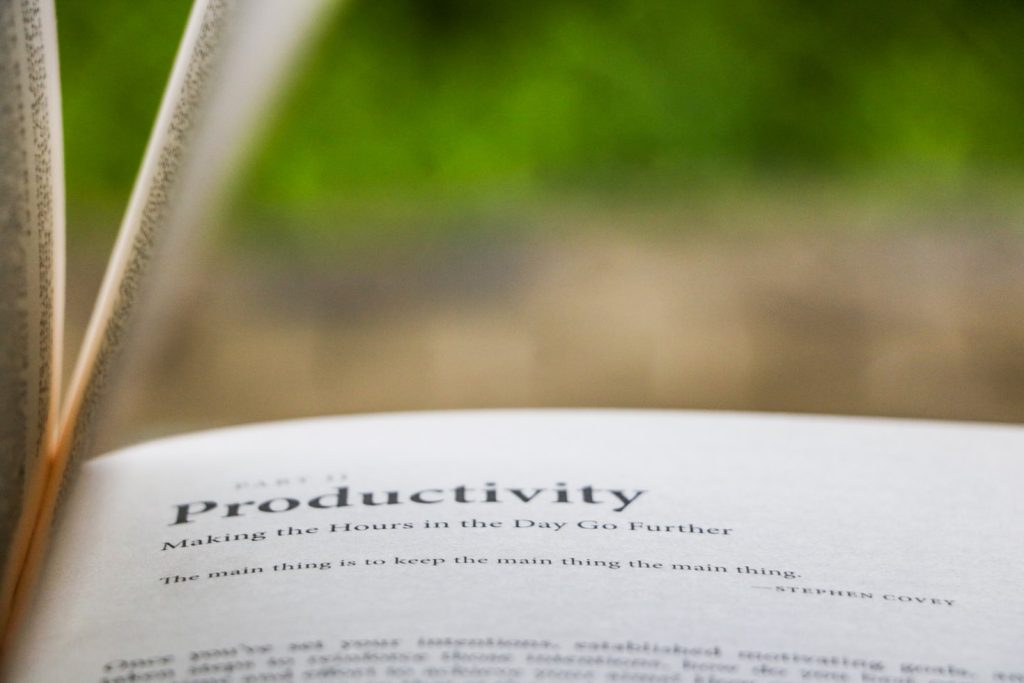
2. Boost Productivity
Productivity is one of the benefits of candle meditation that transcends into your career. Cognitive function improves with meditation along with your brain’s ability to store information.
However, meditation also helps boost productivity by:
- Decluttering your mind so that you can stay focused on tasks for longer periods of time
- Sharpening your concentration, so you’ll be less distracted
Skilled, executive decision-making abilities also improve with meditation. If you read about some of the world’s leading business leaders, you’ll find many of them meditate. A few people known to meditate are Arianna Huffington, Oprah Winfrey, Russell Simmons, Jack Dorsey and so many others.
3. Energizes You
Meditation and energy were the focus of a 2017 study at the University of Waterloo. Researchers found that mindfulness meditation helped boost energy levels in participants.
Why?
It’s still unclear. Researchers theorize that meditation helps improve blood flow to the brain and aids in the release of endorphins.
Both may help with energizing the body and mind.
4. Calms the Mind
Ask most people why they meditate, and they’ll often respond that it helps calm the mind. In a world where mental health seems to be on a rapid decline, meditation should be sought by more people.
Meditation can help calm:
Why?
When you focus on candlelight, or any singular object, your mind has a job to do. It’s also thought that candle gazing opens up the third eye chakra, known as the internal eye, which is known for its calming effects.
Mental stability is just one of the many mental health benefits of this meditation technique.
5. Enhances Your Vision
You don’t need the best candles for meditation to enhance your vision. In fact, you can use any type of candle you wish:
- Beeswax candles
- Scented candles
- Aromatherapy candles
- Etc.
It’s crucial to choose a type of candle that doesn’t irritate your eyes. Also, opt for natural, non-toxic candles if you plan on meditating often.
Interestingly, there’s an abundance of evidence that shows this form of meditation may help prevent eye disease and even support treatment for certain eye diseases. A few of the studies and reviews worth reading on this subject are:
- 2021 trial indicates that patients may have an improvement in intraocular pressure (IOP)
- 2018 study shows a reduction in IOP or fluid pressure in the eye
However, don’t expect candle meditation to reverse blindness or cure a severe form of eye disease. Rather, the primary benefits seem to be a reduction in fluid eye pressure, which is a leading cause of blindness in people with glaucoma.
Personally, I haven’t meditated with candles long enough to verify any of these vision-related claims.
6. Helps You Sleep Better
Sleep is important. When you sleep, your body has a chance to repair and help remove toxins from the brain. Additionally, this is the time when your brain helps reorganize information that you’ve learned and store it in long-term memory.
Candle gazing aids in sleep, according to a 2020 study.
A few key points in the study that are of note are:
- It included just 29 participants – so it’s a small case study
- Participants meditated for 45 minutes for 10 days
- Insomnia severity drastically fell during the study
- Quality of sleep drastically rose
Quality of sleep is very important. If you want to have a restful sleep, Trataka meditation can help. You’ll want to incorporate breathing techniques and meditate for 45 minutes per day. This ancient technique will provide an immense form of anxiety relief, calm the mind and enhance sleep hygiene.
7. Aids in Memory and Retention
Are you the type of person that has selective memory?
You’re not alone.
One of the candle meditation benefits that attracted me the most to this practice is that it aids in both memory and retention. When you’re trying to learn a new language or going through training for your job, candle light meditation can help.
How?
Studies show that:
- Participants experienced a rise in selective attention
- Volunteers in one study experienced an increase in:
- Spatial attention
- Spatial memory
- Working memory
Why? There’s no conclusive reason why meditation improves memory. However, maybe since your brain is allowed to relax and stop focusing on a zillion tasks, it’s able to spend more time organizing and storing memories,
Candle gazing meditation is a lot of fun, and it’s an extremely peaceful way to focus your gaze. But, of course, you might find that the benefits of candle meditation aren’t what you’re looking for when meditating.
And that’s fine.
Meditation is really all about you and what works for you. Don’t like candle meditation? There are many forms of meditation that you can choose from, that are backed by scientific evidence, including: mantra meditation, vipassana meditation, kundalini meditation, pyramid meditation and so much more.
Find a form of meditation that works best for you and practice it.

by Rene Emery | Last updated Feb 19, 2023 | Health and Wellness |
In a world of distractions, staying focused can be a challenge. Even in the workplace, it’s hard to escape social media, text messages and other distractions vying for our attention. Unfortunately, focus isn’t something that comes naturally or easily. Like many other things in life, it’s a skill that you need to learn and improve.
But where do you start? Try these 14 helpful tips on how to stay focused on work.
How to Stay Focused at Work – 14 Helpful Tips
1. Create and Organize Your To-Do List
It’s easy for your mind to wander and get lost in distractions when you don’t have a to-do list for the day. At the end of each workday, create a task list for the next day that includes everything you need to accomplish.
When creating your to-do list, start with the most important and time-consuming tasks. Tackling critical tasks and the most time-consuming tasks first will make the rest of your day feel like a breeze. This concept is known as Eat That Frog.
Eat That Frog! is a book written by Brian Tracy that provides helpful tips on how to stop procrastinating and get more done during the day. Tracy suggests doing the most challenging task of the day first so that the rest of the day feels easy and manageable.
We all have that one thing that we dread doing each day, and that dread makes us procrastinate and drag out the day – whether we realize it or not.
By creating a to-do list with the most difficult and important tasks first, you may find it much easier to stay focused and get more done.
You can create a good old-fashioned to-do list on paper, or you can use an online task manager like:
Your team may also have a collab or project management solution that allows individual team members to create their own task lists.
2. Ditch the Multi-Tasking
Many of us pile our plates so high that we wind up trying to juggle multiple things at once. When you’re in the moment, multi-tasking may seem like you’re getting more done, but in reality, you’re probably taking longer to complete each individual task.
Research shows that trying to do more than one task at once can really hurt productivity, especially if they are complex tasks. The more complex the tasks, the more time you lose when switching your focus.
If you have a habit of multi-tasking, it may be making it harder to remain focused at work. Rather than trying to do it all at once, try staying laser-focused on one task at a time. Remember that to-do list you created? Go through each item one by one. Try to avoid phone calls, text messages and other distractions while you’re accomplishing each task.
When you can put all of your focus and effort into one task, it will be much easier to get the job done faster and more efficiently.
3. Plan Your Day
Creating a to-do list is a great first step and can help you stay focused on just one task at a time. But it’s also helpful to plan out your day.
For example, you may work for three straight hours before taking a 20-minute break or stopping for lunch. Break your day into chunks and plan what you’re going to get done during each chunk.
When you have your days mapped out, it’s much easier to stay on track. And if you do lose focus or fall off the bandwagon, you know exactly where you left off and what you need to do next.
Planners are helpful for mapping out your day, but you can also use Google Calendar or any other online calendar to plan your days.

4. De-Clutter Your Workspace
Looking for tips on how to stay focused working from home? Start by looking at your workstation. Is it cluttered or disorganized? If so, it’s time for a little spring cleaning.
Even if you’re working at an office, co-working space or out on the road, it’s important to make sure that your workspace is clutter-free and organized.
Why? Because clutter can lower your productivity and even lead to procrastination or avoidance strategies. In other words, clutter is distracting. For some of us, it’s downright stressful.
The brain likes order. When your space is disorganized and chaotic, it drains your brain’s energy and makes it harder to focus. Research has found that removing clutter from a home or workspace makes it easier to process information, focus and get things done.
Getting organized is easier than you think. Here are some tips:
- If your desk is cluttered with files and paperwork, invest in a filing cabinet or file folder holder. Desk organizers can also store papers and files neatly on your desk.
- Limit the knick-knacks on your desk to just one or two.
- Keep the items that you use most often within reach of your dominant hand.
- Use shelving to display personal items and free up desk space.
- Store pens and pencils in one convenient place.
Ditching the clutter and organizing your space will make it easier to stay on task and get things done more efficiently. If you’re having trouble letting go of things, try going slowly and removing just one item at a time until your space becomes more manageable.
5. Create a Productive Home Workspace
Many people are looking for tips on how to stay focused while working from home. Even if you’ve been working from home for a while, you may be struggling to be productive. It’s easy to get distracted by chores or other people in the house.
If you’re working from home, it’s important to create a space that promotes productivity instead of hindering it.
Here’s how:
- Establish a dedicated workspace in your home. This could be a separate room or a designated corner of your kitchen, living room or bedroom. Having a designated space for work will make it easier to get into that mindset and stay on task.
- Keep it quiet. Choose a peaceful space in your home to work. Noise and distractions will only make it harder to get things done. For example, working at the kitchen table when the kids or your partner are getting ready to leave for the day will make it nearly impossible to stay focused and get things done.
- Make sure your workstation is clean and organized.
- Give yourself a view of nature if you can. If you can’t work near a window, try adding some greenery.
- Allow in as much natural light as possible.
Your home work environment should help you stay productive and focused. Try a few of these tips or sit down and consider your ideal work environment. Create a space that you look forward to coming into and one that helps you get into that focused, “flow” state.
6. Set Clear Goals
If you have tasks or projects that you need to complete, make sure that they are clear. Clarifying your goals and daily tasks can help you stay on point and create a plan of action.
Your goals should:
- Be clear, specific and concise
- Have an expiration date
- Have a way to track your progress
Whatever you need to accomplish, make sure that you set clear and specific goals. Doing so will give you a clearer picture of what needs to be done and how you’ll get there.
7. Schedule in Distractions
It’s virtually impossible to completely eliminate distractions from the workplace. Whether it’s chatting with co-workers or getting engrossed in that cat video your friend sent you, distractions are everywhere.
To set yourself up for success, schedule in distractions. Use some of your break time to check your phone, call a friend or hop on social media. For this to work, you need to be dedicated and strict.
8. Establish Boundaries
If you want to stay focused at work, it’s essential to establish boundaries. By setting boundaries, you allow yourself to stay on task without distractions, like phone calls, a chatty co-worker or emails asking for an update on another project.
Here are a few ways to establish healthy boundaries in the workplace:
- Say “no” to things. If you continue to pile more onto your plate, you’ll never get anything done.
- Block off time on your schedule for tasks. During that time, ditch the distractions and stay focused only on the task at hand.
- Communicate your values and priorities. Maybe you’ve decided to stay focused on important tasks from 2-3 pm each day. Let your co-workers know that you will be unavailable for phone calls, emails, or chats for that hour. You may still need to be available for your boss or unexpected emergencies, but you’ll eliminate unnecessary distractions.

9. Keep Your Web Distractions in Check
If you spend your day working at a desk from an internet-connected desktop or laptop, it’s not always easy to stay focused. After all, you have a million distracting websites right at your fingertips. Of course, it doesn’t help that we all have smartphones that can just as easily connect us to those distracting websites.
So, how do you keep your web distractions in check?
- Turn off Wi-Fi – if you can. You can’t get lost in a sea of web distractions if you can’t access the internet.
- If you need an internet connection for work, you can use tools like Cold Turkey or SelfControl to block certain websites while you’re working. Just create a list of websites to block, and you’re well on your way to working distraction-free.
It’s much easier to stay focused and on track when you’re not constantly tempted to find a distraction online.
10. Limit Social Media Use
Worldwide, people spend an average of 2 hours on social media. It may not seem like a big deal to check Facebook, Instagram or Twitter while you’re doing a menial task like answering emails. However, those few minutes add up throughout the day. And if you get stuck down a rabbit hole, you may find yourself on social media for 10-20 minutes at a time.
If you want to be a more productive worker, limit your social media use at work.
Some of you may have the discipline to do this without any help. For the rest of us, there are blockers that will limit your access while you’re at work.
Some of the most popular social media blockers are:
- Freedom. Available for Windows, Mac, iOS, Chrome and Android, this app can be used on virtually any internet-connected device. The only downside is that it has a monthly subscription fee.
- RescueTime, which works as either a browser plug-in or an app. RescueTime tracks the amount of time you spend on sites, programs and documents. But it can also block certain websites for a set period of time. Plus, you get access to other productivity tools like goal-setting, and it integrates into Calendar or Slack.
- FocusMe is another app that works on Windows, Mac and Android. It allows you to create your own routine for web browsing, work and more. You can even set productivity goals. Of course, it also blocks distractions. Even if you try to delete an app or stop the timer, FocusMe will continue to block distractions.
If you’re struggling to stay off social media during the workday, one of these apps may help.
11. Start A Meditation Practice
If you’re having trouble staying focused at work, start a meditation practice. Meditating first thing in the morning can help you get started on the right foot and with the right intention.
Over time and as you master the practice, you may find that it’s much easier to stay focused without needing additional tools or technology to block distractions.
In fact, research has shown that even brief periods of mindfulness meditation can help improve attention. And Italian neuroscientist Giuseppe Pagnoni’s study found meditators are better able to control wandering thoughts and prevent them from spiraling out of control.
Pagnoni looked at brain scans of experienced meditators and those who had never meditated. Compared to novices, those who were experienced meditators had increased stability in the ventral posteromedial cortex (vPMC) area of the brain, which is linked to wandering and spontaneous thoughts. In other words, they were better able to stop distracting thoughts from becoming all-consuming.
In the workplace, being able to control your wandering thoughts would be an advantage.
In general, living more mindfully can help you stay more focused while potentially curbing stress and anxiety.
12. Stay Active
Most of us lead sedentary lives. We work desk jobs, and we drive everywhere. All of that pent-up energy can make it hard to stay focused.
Exercise is crucial to both your mental and physical health. In addition to helping maintain a healthy weight and body, exercise can help you stay more focused at work.
Research has shown that moderate and high-intensity physical activity can help improve concentration, memory and problem-solving. You can get these effects from just one workout, and the results last for up to two hours.
Along with better focus, you can enjoy higher energy levels.
Exercising before work can help you take advantage of the focus-boosting effects of exercise, but you only need a few minutes to see a difference. So, if you can’t get in a workout before you start your day, a brisk walk on your lunch break can help.
If you get 15-minute breaks throughout the day, you can also use this time to stay active and help boost your focus when you get back to work.

13. Break Down Big Projects into Bite-size Tasks
When a big project lands on your desk, it’s hard not to feel overwhelmed by it all. Those feelings of being overwhelmed can cause you to procrastinate and make it hard to concentrate on work.
To make more significant projects feel more doable, try breaking them down into bite-size tasks. You can do this by breaking the project down into:
From here, you can then break each one down into tasks. Start by:
- Identifying tasks
- Determining which tasks are priorities
- Setting deadlines for completing these tasks
By setting deadlines for your tasks, you ensure that your project moves along at a steady pace. At the same time, you feel rewarded and motivated each time you check a task off your list.
It becomes more manageable and less overwhelming when you break a big project down into bite-size tasks. Yes, the entire project may be a big undertaking, but you can certainly handle each individual task.
14. Make Sleep a Priority
A lack of sleep or poor quality sleep can make it hard to stay on track. After all, sleep deprivation makes you feel groggy and sluggish. Your reaction time isn’t on point, and your brain, essentially, turns to mush.
Research shows that sleep deprivation has a negative effect on cognitive function. So, when you try to stay focused on a task at work, it feels like you’re trudging through mud.
To stay focused and on task, make sleep a priority. Aim to get about eight hours of sleep each night, and do your best to wake up and go to bed at the same time every night.
Learn How to Get to Sleep on Time – Starting Tonight!
Final Thoughts
It’s not always easy to remain focused at work, especially if you have to deal with noisy distractions and a pile of tasks each day. These tips can help you learn how to focus on work, so you can get more done and waste less time.
You can also use these tips to stay focused with online learning!
In a world of distractions, staying focused can be a challenge. Even in the workplace, it’s hard to escape social media, text messages and other distractions vying for our attention. Unfortunately, focus isn’t something that comes naturally or easily. Like many other things in life, it’s a skill that you need to learn and improve.
But where do you start? Try these 14 helpful tips on how to stay focused on work.
How to Stay Focused at Work – 14 Helpful Tips
1. Create and Organize Your To-Do List
It’s easy for your mind to wander and get lost in distractions when you don’t have a to-do list for the day. At the end of each workday, create a task list for the next day that includes everything you need to accomplish.
When creating your to-do list, start with the most important and time-consuming tasks. Tackling critical tasks and the most time-consuming tasks first will make the rest of your day feel like a breeze. This concept is known as Eat That Frog.
Eat That Frog! is a book written by Brian Tracy that provides helpful tips on how to stop procrastinating and get more done during the day. Tracy suggests doing the most challenging task of the day first so that the rest of the day feels easy and manageable.
We all have that one thing that we dread doing each day, and that dread makes us procrastinate and drag out the day – whether we realize it or not.
By creating a to-do list with the most difficult and important tasks first, you may find it much easier to stay focused and get more done.
You can create a good old-fashioned to-do list on paper, or you can use an online task manager like:
Your team may also have a collab or project management solution that allows individual team members to create their own task lists.
2. Ditch the Multi-Tasking
Many of us pile our plates so high that we wind up trying to juggle multiple things at once. When you’re in the moment, multi-tasking may seem like you’re getting more done, but in reality, you’re probably taking longer to complete each individual task.
Research shows that trying to do more than one task at once can really hurt productivity, especially if they are complex tasks. The more complex the tasks, the more time you lose when switching your focus.
If you have a habit of multi-tasking, it may be making it harder to remain focused at work. Rather than trying to do it all at once, try staying laser-focused on one task at a time. Remember that to-do list you created? Go through each item one by one. Try to avoid phone calls, text messages and other distractions while you’re accomplishing each task.
When you can put all of your focus and effort into one task, it will be much easier to get the job done faster and more efficiently.
3. Plan Your Day
Creating a to-do list is a great first step and can help you stay focused on just one task at a time. But it’s also helpful to plan out your day.
For example, you may work for three straight hours before taking a 20-minute break or stopping for lunch. Break your day into chunks and plan what you’re going to get done during each chunk.
When you have your days mapped out, it’s much easier to stay on track. And if you do lose focus or fall off the bandwagon, you know exactly where you left off and what you need to do next.
Planners are helpful for mapping out your day, but you can also use Google Calendar or any other online calendar to plan your days.

4. De-Clutter Your Workspace
Looking for tips on how to stay focused working from home? Start by looking at your workstation. Is it cluttered or disorganized? If so, it’s time for a little spring cleaning.
Even if you’re working at an office, co-working space or out on the road, it’s important to make sure that your workspace is clutter-free and organized.
Why? Because clutter can lower your productivity and even lead to procrastination or avoidance strategies. In other words, clutter is distracting. For some of us, it’s downright stressful.
The brain likes order. When your space is disorganized and chaotic, it drains your brain’s energy and makes it harder to focus. Research has found that removing clutter from a home or workspace makes it easier to process information, focus and get things done.
Getting organized is easier than you think. Here are some tips:
- If your desk is cluttered with files and paperwork, invest in a filing cabinet or file folder holder. Desk organizers can also store papers and files neatly on your desk.
- Limit the knick-knacks on your desk to just one or two.
- Keep the items that you use most often within reach of your dominant hand.
- Use shelving to display personal items and free up desk space.
- Store pens and pencils in one convenient place.
Ditching the clutter and organizing your space will make it easier to stay on task and get things done more efficiently. If you’re having trouble letting go of things, try going slowly and removing just one item at a time until your space becomes more manageable.
5. Create a Productive Home Workspace
Many people are looking for tips on how to stay focused while working from home. Even if you’ve been working from home for a while, you may be struggling to be productive. It’s easy to get distracted by chores or other people in the house.
If you’re working from home, it’s important to create a space that promotes productivity instead of hindering it.
Here’s how:
- Establish a dedicated workspace in your home. This could be a separate room or a designated corner of your kitchen, living room or bedroom. Having a designated space for work will make it easier to get into that mindset and stay on task.
- Keep it quiet. Choose a peaceful space in your home to work. Noise and distractions will only make it harder to get things done. For example, working at the kitchen table when the kids or your partner are getting ready to leave for the day will make it nearly impossible to stay focused and get things done.
- Make sure your workstation is clean and organized.
- Give yourself a view of nature if you can. If you can’t work near a window, try adding some greenery.
- Allow in as much natural light as possible.
Your home work environment should help you stay productive and focused. Try a few of these tips or sit down and consider your ideal work environment. Create a space that you look forward to coming into and one that helps you get into that focused, “flow” state.
6. Set Clear Goals
If you have tasks or projects that you need to complete, make sure that they are clear. Clarifying your goals and daily tasks can help you stay on point and create a plan of action.
Your goals should:
- Be clear, specific and concise
- Have an expiration date
- Have a way to track your progress
Whatever you need to accomplish, make sure that you set clear and specific goals. Doing so will give you a clearer picture of what needs to be done and how you’ll get there.
7. Schedule in Distractions
It’s virtually impossible to completely eliminate distractions from the workplace. Whether it’s chatting with co-workers or getting engrossed in that cat video your friend sent you, distractions are everywhere.
To set yourself up for success, schedule in distractions. Use some of your break time to check your phone, call a friend or hop on social media. For this to work, you need to be dedicated and strict.
8. Establish Boundaries
If you want to stay focused at work, it’s essential to establish boundaries. By setting boundaries, you allow yourself to stay on task without distractions, like phone calls, a chatty co-worker or emails asking for an update on another project.
Here are a few ways to establish healthy boundaries in the workplace:
- Say “no” to things. If you continue to pile more onto your plate, you’ll never get anything done.
- Block off time on your schedule for tasks. During that time, ditch the distractions and stay focused only on the task at hand.
- Communicate your values and priorities. Maybe you’ve decided to stay focused on important tasks from 2-3 pm each day. Let your co-workers know that you will be unavailable for phone calls, emails, or chats for that hour. You may still need to be available for your boss or unexpected emergencies, but you’ll eliminate unnecessary distractions.

9. Keep Your Web Distractions in Check
If you spend your day working at a desk from an internet-connected desktop or laptop, it’s not always easy to stay focused. After all, you have a million distracting websites right at your fingertips. Of course, it doesn’t help that we all have smartphones that can just as easily connect us to those distracting websites.
So, how do you keep your web distractions in check?
- Turn off Wi-Fi – if you can. You can’t get lost in a sea of web distractions if you can’t access the internet.
- If you need an internet connection for work, you can use tools like Cold Turkey or SelfControl to block certain websites while you’re working. Just create a list of websites to block, and you’re well on your way to working distraction-free.
It’s much easier to stay focused and on track when you’re not constantly tempted to find a distraction online.
10. Limit Social Media Use
Worldwide, people spend an average of 2 hours on social media. It may not seem like a big deal to check Facebook, Instagram or Twitter while you’re doing a menial task like answering emails. However, those few minutes add up throughout the day. And if you get stuck down a rabbit hole, you may find yourself on social media for 10-20 minutes at a time.
If you want to be a more productive worker, limit your social media use at work.
Some of you may have the discipline to do this without any help. For the rest of us, there are blockers that will limit your access while you’re at work.
Some of the most popular social media blockers are:
- Freedom. Available for Windows, Mac, iOS, Chrome and Android, this app can be used on virtually any internet-connected device. The only downside is that it has a monthly subscription fee.
- RescueTime, which works as either a browser plug-in or an app. RescueTime tracks the amount of time you spend on sites, programs and documents. But it can also block certain websites for a set period of time. Plus, you get access to other productivity tools like goal-setting, and it integrates into Calendar or Slack.
- FocusMe is another app that works on Windows, Mac and Android. It allows you to create your own routine for web browsing, work and more. You can even set productivity goals. Of course, it also blocks distractions. Even if you try to delete an app or stop the timer, FocusMe will continue to block distractions.
If you’re struggling to stay off social media during the workday, one of these apps may help.
11. Start A Meditation Practice
If you’re having trouble staying focused at work, start a meditation practice. Meditating first thing in the morning can help you get started on the right foot and with the right intention.
Over time and as you master the practice, you may find that it’s much easier to stay focused without needing additional tools or technology to block distractions.
In fact, research has shown that even brief periods of mindfulness meditation can help improve attention. And Italian neuroscientist Giuseppe Pagnoni’s study found meditators are better able to control wandering thoughts and prevent them from spiraling out of control.
Pagnoni looked at brain scans of experienced meditators and those who had never meditated. Compared to novices, those who were experienced meditators had increased stability in the ventral posteromedial cortex (vPMC) area of the brain, which is linked to wandering and spontaneous thoughts. In other words, they were better able to stop distracting thoughts from becoming all-consuming.
In the workplace, being able to control your wandering thoughts would be an advantage.
In general, living more mindfully can help you stay more focused while potentially curbing stress and anxiety.
12. Stay Active
Most of us lead sedentary lives. We work desk jobs, and we drive everywhere. All of that pent-up energy can make it hard to stay focused.
Exercise is crucial to both your mental and physical health. In addition to helping maintain a healthy weight and body, exercise can help you stay more focused at work.
Research has shown that moderate and high-intensity physical activity can help improve concentration, memory and problem-solving. You can get these effects from just one workout, and the results last for up to two hours.
Along with better focus, you can enjoy higher energy levels.
Exercising before work can help you take advantage of the focus-boosting effects of exercise, but you only need a few minutes to see a difference. So, if you can’t get in a workout before you start your day, a brisk walk on your lunch break can help.
If you get 15-minute breaks throughout the day, you can also use this time to stay active and help boost your focus when you get back to work.

13. Break Down Big Projects into Bite-size Tasks
When a big project lands on your desk, it’s hard not to feel overwhelmed by it all. Those feelings of being overwhelmed can cause you to procrastinate and make it hard to concentrate on work.
To make more significant projects feel more doable, try breaking them down into bite-size tasks. You can do this by breaking the project down into:
From here, you can then break each one down into tasks. Start by:
- Identifying tasks
- Determining which tasks are priorities
- Setting deadlines for completing these tasks
By setting deadlines for your tasks, you ensure that your project moves along at a steady pace. At the same time, you feel rewarded and motivated each time you check a task off your list.
It becomes more manageable and less overwhelming when you break a big project down into bite-size tasks. Yes, the entire project may be a big undertaking, but you can certainly handle each individual task.
14. Make Sleep a Priority
A lack of sleep or poor quality sleep can make it hard to stay on track. After all, sleep deprivation makes you feel groggy and sluggish. Your reaction time isn’t on point, and your brain, essentially, turns to mush.
Research shows that sleep deprivation has a negative effect on cognitive function. So, when you try to stay focused on a task at work, it feels like you’re trudging through mud.
To stay focused and on task, make sleep a priority. Aim to get about eight hours of sleep each night, and do your best to wake up and go to bed at the same time every night.
Learn How to Get to Sleep on Time – Starting Tonight!
Final Thoughts
It’s not always easy to remain focused at work, especially if you have to deal with noisy distractions and a pile of tasks each day. These tips can help you learn how to focus on work, so you can get more done and waste less time.
You can also use these tips to stay focused with online learning!

by Michael DeFelice | Last updated Jan 23, 2022 | Health and Wellness |
Approximately 98% of universities offer online classes, and roughly 50% of professors approve of virtual schools. The pandemic helped create a cosmic shift in the way people learn, but one issue remains: how to stay focused during online school.
And when I use the term “school,” this can mean:
- Online classes for:
- Online courses
- Corporate training / education
- Any type of distance learning
Unfortunately, many ways to stay focused in school don’t translate to online learning. For example, paying attention in class is easier for many people because an instructor will make sure they’re not on your phone, running to the refrigerator to grab a snack, playing video games or petting their dog.
Virtual classes give you a lot of freedom, but if you think back to your education, you’ll often find no one really teaches you how to stay focused while studying.
In fact, you never really learn how to learn.
If you want to learn how to learn, there’s a great, free class on the subject on Coursera called: Learning How to Learn: Powerful mental tools to help you master tough subjects. Barbara Oakley does a fantastic job instructing the class, and I’ve personally enjoyed it.
However, today we’re going to hone in on how to pay attention in online classes. We’re going to go through tips to stay focused, how not to get distracted during online school and actionable methods that you can apply to your learning today that will make a dramatic difference in your learning.
How to Stay Focused During Online School Using 9 Simple Hacks

1. Create a Dedicated Study Space
Online students are slowly retraining themselves on how to learn virtually. Want to know how to stay focused on studies? Create a dedicated space. Think of your actual class environment. What does it have?
- A desk or some place to take notes and open a book
- Organization, primarily because the desk is empty
- No clutter
Ideally, you’ll want to pick a room or space in your home where you have everything you need to learn. Notebooks, pencils, pens, organization tools and not much else. Your space should be clear of clutter and have the main goal of making it easy to learn.
If your space is cluttered, your mind will be cluttered.
2. Set Daily Schedules
Many people never truly learn how to stay focused in class because they allow themselves too much freedom. For example, a student in high school isn’t likely to create a strict class time, which includes:
- Class schedule
- Study schedule
Instead, they’ll give themselves little time to focus on schoolwork, cram everything in at the last minute and hope for the best.
Unfortunately, a lot of students do well with this last-minute hustle.
However, if you can’t focus on online classes, it’s eventually going to lead to poor study habits. You should create a schedule that works well for you, and your schedule can even evolve. For example:
- Monday: Class from 9am to 10:30am; Study time from 6pm to 7pm
- Tuesday: Class from 10am to 10:30am; Study time from 3pm to 4pm
One of the best things about remote learning is that focus time can often revolve around your schedule. Sure, if you have strict class start times, you may have less freedom to choose when to go to class, but you’ll always have the freedom to study on a schedule conducive to your type of learning.
You need to get to bed on time, wake up on time and remain consistent. In fact, studies show that your brain works to store external stimuli when you sleep. If you’re not sleeping enough, you’re hindering your brain’s ability to store the information you learn.
3. Create Daily Checklists
Many teens want to know how to stay focused in high school, and one of the best methods is to make daily checklists. If you’re in college, university, taking an online class for leisure or work or anything else, these same to-do lists will work great.
Simply:
- Create a list of things you need to get done
- Sort your list by each task’s priority
You may list everything from making coffee before class to mental breaks, study breaks, showering, etc.
If you have a daily checklist of all of the major tasks that you need to complete, it will make your day – and learning – much easier.
4. Block Background Noise
If you’re at home and hear someone else in the house talking or watching their favorite television show, it’s going to be very distracting for you. White noise is an excellent option because it will block noise so that you can focus on learning.
However, you need to find a way to block background noise for yourself.
Learning styles are different, so you may find that you’re best able to block noise with:
- Earphones
- Noise blocking headphones
- Classical music
- White noise
Simply find a way to ignore the noise and focus on your academic success.
5. Use Offline Tools
Education really has two parts:
- Instruction
- Studying
Your professor or teacher may spend an hour teaching you a subject that you study for four hours on your own. A major issue when people learn how to focus on online school is that they do everything online.
By everything, this means that they take all of their notes online, study online and go to class online.
If the Internet is down for a few hours, they shrug and just skip the day’s learning. You should be utilizing offline tools to help you study, too. A few of these tools are:
- Physical notebooks
- Books
- Stored media (offline mode)
In fact, a 2009 study suggests that handwriting may provide better recognition and recall than typing. Brain imaging seems to back this theory, too. So, if you’re taking notes online, it may be beneficial to start writing these notes out for better recall and also to use them offline, too.
How To Focus on Online Classes by Eliminating Distractions
When first researching how to stay focused during online school, it was apparent that time management and eliminating distractions would be crucial to your success. As someone that has been running a business from their house and learning online for over 10 years, I have a lot of firsthand experience on distractions.
And while I don’t have an answer for a needy dog wanting to play catch midday, I do have a few great, personal tips on eliminating distractions for long periods of time.
A few of the tips that work well for me to get rid of distractions are:
6. Create a No Person Allowed Space

Distractions are often associated with notifications on your phone, but some of the main distractions exist right in your home. For example, dogs, kids, parents, spouses and everything in between can become a distraction.
Actually, procrastination plays a major role in these distractions, too.
If you don’t want to log into your online class, you’ll decide it’s a great time to go ask a random question to anyone in the house.
However, you’re just putting off the inevitable and will need to go back to studying eventually. One method that works wonders for getting rid of distractions when studying is to make your designated study area your own space.
No one is allowed in this space while you’re studying.
Put a sign on the outside of the door. Lock the door. Do whatever it takes to keep other people from distracting you while you’re learning online.
7. Block Non-essential Notifications
Notifications on your phone, and to a lesser extent your computer, are going to be very distracting. The average person receives over 63 notifications a day, and if you’re trying to get anything done, you’ll quickly find that your productivity rate plummets from a single notification.
A few ways to block notifications are:
- Turn your phone on airplane mode
- Turn off all notifications
- Use an app
- Turn on Do Not Disturb Mode
Blocking notifications will allow you to focus on online courses and school.
8. Block Distracting Websites
One of the best tips for how to stay focused at work also applies to learning online: block distracting websites. There are numerous, technical ways to do this, but one of the easiest methods is to use a browser extension.
A few of the best options available, include:
Chrome
Firefox
If you don’t see the browser you use listed above, you’ll surely find equivalent options available.
9. Block Social Media Channels
Social media wastes 145 minutes of people’s time per day. Imagine your boss or teacher telling you that you need to spend 2 hours and 25 minutes of your day doing more work. Instead, you’re losing this same amount of time on social media.
Using the same extensions above, you’ll want to block all, non-essential social media channels.
By non-essential, we mean any social media channel you’re not using for school or your course. Additionally, you’ll want to shut off notifications on your phone or simply turn it upside down while you’re studying.
Figuring out how to stay focused during online school or classes takes a lot of time and effort. Everyone has a different attention span and learns in their own unique way. However, the tips above are a good starting point that you can build off to find your own ways to stay focused when learning online.

by Rene Emery | Last updated Feb 19, 2023 | Health and Wellness |
If you’re having trouble falling asleep at night, you’re not alone. An estimated 70 million Americans have chronic sleep issues. The problem isn’t necessarily a medical one (although it can be). In many cases, it’s just a matter of learning how to wind down for the night and establishing a healthy sleep routine.
If you’re not sure where to start, we have some simple tips to help you relax before bed. Winding down for the night isn’t as hard as it seems!
14 Ways to Wind Down for the Night

1. Disconnect from Social Media
If you want to wind down before bed and calm your mind, disconnect from social media. Close out Instagram, Facebook, Twitter and whatever other social media apps you use for the night.
Here’s why social media is sabotaging your sleep:
- Smartphones emit blue light that messes with your body’s production of melatonin and your circadian rhythm. When your sleep-wake cycle is out of whack, it’s harder to fall asleep and wake up in the morning.
- Social media keeps your mind stimulated. Whether you’re chatting or just scrolling, the content you see will keep your mind going.
To give your mind a chance to settle down and relax, try closing out all social media apps an hour or two before bed. If you’re used to scrolling or chatting before bed, try doing one of the other relaxing activities on our list instead.
2. Diffuse Essential Oils
Aromatherapy is a great way to unwind at the end of the day. The right essential oils can make you feel more relaxed and ready to drift off to sleep.
Aromatherapy’s effectiveness is more than just hearsay.
One study looked at the effects of aromatherapy on sleep, anxiety and blood pressure in cardiac ICU patients. The aromatherapy group had less anxiety, lower blood pressure and better sleep after cardiac stent insertion compared to the control group.
Here are some great essential oils for winding down:
- Lavender
- Chamomile
- Clary sage
- Rose
- Bergamot
- Valerian
- Jasmine
You can also find essential oil blends made just for sleep or relaxation.
3. Use White Noise
Sometimes, it can be challenging to relax and unwind at night because there’s just too much noise around us. It could be neighbors, other family members or just the traffic outside.
A white noise machine can help block out noise that may be keeping you from relaxing and getting into that sleep state of mind. And once white noise becomes part of your nightly machine, your mind will associate the sound with sleep and make it easier to fall asleep.
Best of all, most white noise machines are small and portable, so you can take them with you wherever you go.
4. Get Moving
Exercise and sleep are intimately linked. Just 30 minutes of moderate cardio exercise a day can help you sleep better. And you can start seeing results immediately. Even if you haven’t exercised in years, getting moving for just 30 minutes today can help you get better sleep tonight.
Avoid exercising too late in the day or you’ll feel energized instead of tired before bed.

5. Try Breathing Exercises
Whether you’re feeling stressed or just having trouble quieting your mind at night, deep breathing exercises can help you relax and unwind.
The great thing about breathing exercises is that you don’t need anything special to get started. You only need a few minutes of your time.
Here’s a simple breathing exercise to try:
- Start by lying down with your legs straight out in front of you. Keep your legs slightly apart and your arms gently at your sides, palm sides up.
- Place one hand on your chest and the other on your stomach.
- Close your eyes.
- Take a deep breath in and focus on filling your abdomen.
- Exhale slowly.
- Repeat for 5-10 minutes or however long you have.
Practice this breathing exercise every night and before bed to help your body get into a more relaxed state and ready for sleep.
6. Improve Your Sleep Hygiene
One of the best ways to wind down for the night is to work on your sleep hygiene. Establishing a solid night routine can help you fall asleep faster and wake up feeling more refreshed. When you practice the same habits every night, it will let your body know it’s time for bed. As a result, your body will naturally learn to relax and get into the right mindset for sleep.
The first step is to go to sleep and wake up at the same time every day.
Learn How to Get to Bed on Time.
Here are some other ways to improve your sleep hygiene:
- Give yourself 30 minutes for winding down.
- Try to avoid taking naps during the day. Overdoing it with naps can make it harder to fall asleep and stay asleep.
- Set the mood. Dim the lights, put your smartphone away and slip into something comfortable.
- Keep the room at a cool temperature. Experts say that 65 degrees Fahrenheit is ideal for sleeping.
- Use black-out curtains if your room is too bright at night. Light can mess with your circadian rhythm.
- Use comfortable blankets and sheets.
- Invest in a high-quality mattress and pillow.
The important thing is to create a comfortable, relaxing environment for sleep and winding down.
7. Take a Relaxing Warm Bath
It may sound cliché, but a relaxing bath may be just what you need to wind down at night. Make it a part of your nightly routine and do it with intention.
- Make it a bubble bath or use bath bombs.
- Light some candles.
- Diffuse some essential oils.
- Put on soft, calming music.
Make sure that you give yourself time to enjoy and relax your bath. Don’t rush it, and don’t let distractions get in the way.
8. Read a Book
Instead of scrolling on your phone before bed, try reading a book instead. Reading is a great way to relax and unwind after a long day.
In addition to helping you relax, reading can:
- Improve sleep quality
- Help improve your cognition over the long-term
- Improve creativity
Making reading a nightly habit can help you learn new things and even improve your focus during the day.
Choose any book that you love. It can be fiction, self-improvement, health, business or non-fiction. Just make sure that it’s engaging and entertaining.

9. Listen to Calming Music
Music can be a great way to unwind before bed, especially when choosing calming music.
One study found that listening to music can help you fall asleep faster. In that study, the participants started listening to music before bed. It took them 37-69 minutes to fall asleep before the study. However, once they added music to their nightly routine, they were able to fall asleep in just 6-13 minutes.
Along with falling asleep faster, the participants also found that their sleep quality improved.
Steer clear of energizing music if you want to relax and fall asleep. Classical or meditation music can set that calming atmosphere that can help you get into the right state of mind.
10. Write in Your Journal
Stress and anxiety about the next day can make it harder to wind down and relax before bed. Journaling can help reduce worry and stress while improving sleep quality.
Set aside 10-15 minutes before bed for journaling. What’s making you anxious about tomorrow? Can you create a to-do list to help you tackle the day’s tasks?
You can also journal about the positive experiences you had today or the things you are grateful for.
Writing about your worries can be very therapeutic and practicing gratitude before bed can help you sleep more soundly.
11. Try Stretching
Stretching is a great way to ease tension, improve blood flow and help you feel more relaxed before bed. With all of that stress and tension out of the way, you can get into a deep state of relaxation, making it easier to fall asleep.
Your nightly stretching routine doesn’t have to be complicated either.
Try this simple stretching routine!
10 min Evening Yoga Stretch – Bedtime Yoga for Beginners

12. Meditate
Sleep can be elusive when we have so many things on our minds. Calming your mind and letting your thoughts drift away can help you slip into a state of relaxation that makes it easy to fall asleep.
Like stretching, meditation can help ease tension and stress.
If you’re new to meditation, you may find it easier to use a guided meditation practice to help you learn the ropes.
Here’s a guided meditation to help you get started:
10 Minute Meditation for Before You Sleep

Winding down for the night is an integral part of the sleep process. Use these tips to help you get into a more relaxed state before turning in for the night.

by Michael DeFelice | Last updated Feb 19, 2023 | Health and Wellness |
Sleep is crucial to your health, whether you’re trying to live a mindful life, build muscle or simply live your best life. But, if you’re like most people, you want to know how to get to bed on time because you procrastinate.
However, there’s a psychological and societal reason why people stay up late and can’t get to bed early.
If you think about your day, chances are you:
- Get up
- Shower
- Do your daily grooming
- Eat breakfast
- Head out to work
As usual, you’re stressed at work, struggling through the day and something won’t align with your goals for the day.
Maybe you lose 10 minutes stuck in traffic, and you need to pick up coffee because you know that without it, you’re going to be super grumpy in the morning. Add in the extra few minutes talking to your neighbor or walking the dog, and you barely have time to sit down.
It’s crazy how you start the day with the intention to get things done, but because you can’t stop staying up late, you just don’t have time to do everything you want to do.
So, what happens? Procrastination, or as some people call it, “revenge procrastination.”
You sacrifice sleep for more free time.
I do it, too. In fact, even the CEOs of the world that brag about sleeping 2 – 4 hours a night are sacrificing sleep for something else. Most people want to learn how to go to bed on time but won’t fix the main issue: lack of free time in your schedule.
We will discuss how to go to sleep earlier, stop staying up late and begin doing it today.
How to Get to Bed on Time Tonight Using 6 Sleep Hacks

1. Create a Good Sleep Routine
Yup. You need a routine. It’s easier to do pretty much everything with a plan. But, what should your sleep plan be?
Thankfully, there are sleep statistics that explain how much sleep the average person needs per night:
|
Age Group
|
Sleep Recommendation
|
|
6 – 12
|
9 – 12 hours of sleep
|
|
13 – 18
|
8 – 10 hours of sleep
|
|
18 – 60
|
7+ hours of sleep at night
|
|
61 – 64
|
7 – 9 hours a night
|
|
65+
|
7 – 8 hours a night
|
I know that’s it really easy to roll your eyes and skip this step. However, if you want to know how to get to bed on time, you need to know what “on time” means for you.
Use the table above to create your sleep plan. Insufficient sleep and a poor bedtime routine will have compounding consequences that force you into a destructive sleep pattern.
If you need to go to school or work and leave the house by 8 am, you’ll need to figure out how long it takes you to get ready in the morning, cushion it by 20 minutes and then determine what time to go to bed.
For example, if you need 1 hour to get ready in the morning, add 20 minutes to this time and you should be waking up at 6:40 in the morning. If you sleep 7 hours a night, you need to be sleeping (not sitting in bed thinking about the day) by 11:40.
2. Take a Shower or Bath – It’s Up to You
Do you want to know how to start going to bed earlier? Take a bath – or a shower. And you’ll also benefit from saving time in the morning.
A 2019 clinical review found that a 10-minute shower or bath about one or two hours before bedtime led to less sleep onset latency.
Why?
It likely has to do with a bath or shower changing your body temperature before bed.
So, as part of your bedtime plan, make it a point to add your shower into the mix.
3. Start with 15-minute Sleep Adjustment Increments
You already have a sleep routine that isn’t indicative of going to bed on time. And while it sounds great to change your sleep habits overnight, you’re likely setting yourself up for failure with such a drastic change.
Instead, you’ll want to make small sleep adjustments, initially.
Let’s say that you normally go to bed at 1 am, but you want to get to sleep earlier, you’ll want to make sure that you’re sleeping by 12:45.
After a day or two of going to bed 15 minutes earlier, you can readjust your schedule to go to bed at 12:30 and repeat until you hit your sleep time goal.
4. Take the Time to Stretch or Do Yoga
If you like to stretch or do yoga, you can add them to your before bed routine. There are many benefits to this bedtime ritual, including:
However, you don’t want to engage in fast-paced yoga or exercise before bed because it will have the exact opposite effect. A general rule of thumb is that if you’re sweating when stretching or doing yoga, slow down because you’re doing too much.
5. Exercise to Improve Your Nightly Sleep
Want to know how to get to bed on time? Exercise. A lot of people are filled with energy when their head hits the pillow, so they’ll spend hours thinking about the day, the next day, work, not falling asleep and so much more.
Exercise helps you reach deep sleep and will deplete your energy, too.
However, some people find that they can’t sleep well if they exercise too close to bedtime. Instead, try exercising a few hours before bed to see if it helps you repay some of your sleep debt.
6. Get Stuff Done During the Day
Getting to bed on time is not easy when you have no free time. The phenomenon of bedtime procrastination shows us that we’ll fight our natural body clock, suffer from poor sleep quality and enter sleep debt because we don’t have enough free time.
Why?
Many people procrastinate and never get what they need to get done before bed.
And since you’re doing chores, cooking, cleaning and doing everything in between until an hour before bed, you’ll stay up later. You’ll watch an extra episode of your favorite television show, FaceTime friends or troll social media because you want free time for yourself.
If you’re stuck in this rut and want to get to bed on time, you should try getting everything on your to-do list done during the day.
How to Get to Sleep Earlier by Changing Your Sleep Environment
If you want to learn how to sleep earlier and wake up early, you need to create an environment that is perfect for sleep. A few of the hacks to fall asleep earlier are:
- Change the thermostat. What’s the perfect sleep temperature? Studies suggest that your room should be between 60°F and 67°F if you want to maximize REM sleep – which you do.
- Remove distractions. Want to learn how to go to bed early? Get rid of the distractions that are keeping you awake. For example, it makes no sense to try going into bed earlier and then staying on your phone or laptop for 20 minutes. Instead, turn your phone upside down, leave the laptop in a different room and reserve your space for just sleeping. Also, try to keep your last screen time 20 – 30 minutes before you want to go to sleep.
- Darken the room. When I lived in an apartment, there was a bright light shining into my room in the middle of the night. There’s only so much tossing and turning, putting the pillow over my head and wishing that the electricity would go out that a single person could handle. Instead, I learned to darken the room. Blackout curtains were draped over the window, the sun never shined through, and if the world were ending, I would never have known. But. I could get to bed on time and sleep like the dead.
- Drown the noise out. As you can imagine, living in the bottom apartment also led to a lot of noise. Hearing children scream and jump from the heavens on to the ground jolted me out of bed for months. However, a white noise machine helped shut the unwanted noise out of my space and allowed me to sleep. If you have a lot of noise that keeps you awake at night or wakes you up before the alarm clock, try finding ways to eliminate the noise.
When trying to go to bed earlier, these tips really help. However, you can also try out natural sleep aids. A few of the hacks that work amazingly if you toss and turn a lot in bed, are:
- Tea. Herbal tea may be a good option for you. Chamomile tea can help you relax and fall asleep. However, if you get up in the middle of the night to go to the bathroom already, you may want to skip this one.
- Melatonin. Sleep experts recommend melatonin because it helps you induce sleep by regulating your circadian rhythm. If you have a sleep disorder or can’t seem to get sufficient sleep, melatonin supplements can help. However, these supplements should only be temporary and not relied on forever. Also, if you take too much melatonin, you might suffer from daytime sleepiness.
You can also try aromatherapy or other ways to wind down for the night. In fact, we wrote an entire post on this very subject.
Learn How to Wind Down for the Night with 12 Simple Tips.
How to Stop Staying Up Late Checklist

Are you a night owl that is trying to figure out how to stop staying up late at night? Sleep schedules are hard to maintain if you stay up late. An excellent checklist for how to get to bed early and stop staying up late are:
- Get stuff done during the day
- Stop feeling like you deserve extra time to stay up late
- Reduce blue light before bed (no smartphone)
- Slowly make the change
- Exercise
- Stretch
- Avoid caffeine, energy drinks and stimulants
- Avoid nicotine of any kind
- Skip naps
- Don’t watch TV or read in bed
- Get ready for bed before you’re tired
Nighty, Night!
Now that you know how to get to bed on time, it’s up to you to commit to following your sleep routine. Sure, you can go to a sleep specialist if nothing else works for you, but healthy sleep habits start with you.
A little effort, and following some of the tips above, will help you fight back against the effects of sleep deprivation, set an earlier bedtime and actually go to bed on time.

by Michael DeFelice | Last updated Mar 18, 2023 | Health and Wellness |
Coffee is fantastic to drink. A favorite drink worldwide, there are hot and cold brew coffee benefits that I’ve discussed previously.
But, there are also coffee scrub benefits!
Instead of drinking coffee, you’ll use the ground coffee beans to help with everything from removing dead skin cells to alleviating dry skin, stretch marks and even reducing the appearance of cellulite. Additionally, you can expand your blood vessels and increase blood flow.
What are the benefits of a coffee scrub?
We’re going to journey through a wide range of reasons why you may want to use your coffee grounds to make an excellent scrub of your own. But, of course, if you’re not interested in a DIY coffee scrub, you can go on Amazon or to many beauty stores and find coffee soaps and scrubs available.
6 Coffee Scrub Benefits You Never Want to Miss
1. Alleviate Inflammation
External inflammation, such as those caused by breakouts, can be soothed and calmed with the right scrub. Coffee scrub benefits for skin inflammation are possible thanks to two main compounds and substances in coffee:
- Polyphenols
- Hydroxycinnamic acid
Polyphenols are well-known and used in skincare because it’s a compound that is known for its anti-oxidant and anti-inflammatory properties. Additionally, there are immunomodulatory benefits of polyphenols, which make these compounds exceptional for both skin disorders and potentially skin cancer (view a great study here).
Hydroxycinnamic acid has been well-studied (view here), and it is found to have anti-inflammatory properties in vivo and vitro.
2. Restore Your Skin With a Coffee Scrub’s Anti-aging Power
Antioxidants are well-known for their ability to slow the aging process, and we already know that polyphenols are crammed with great antioxidants. When applied to the skin, coffee scrubs and honey (a great addition) can help you fight back against:
Of course, the scrub will also help tame inflammation, which has significant skin benefits. However, stopping inflammation isn’t enough to slow the aging process.
Right?
One study found that coffee offered the benefit of reducing pigmentation spots, protecting the skin from photoaging and also may decrease hyperpigmentation.
You might even want to try mushroom coffee because mushrooms are great for the skin and anti-aging.
3. Improve Blood Circulation
What benefits does coffee have when used in a body scrub? For one, it’s great for improving blood circulation in the body. If you have circulation issues, caffeine increases circulation in the body.
Caffeine, even when applied to the skin, is absorbed into the skin and bloodstream.
Improved circulation is just amazing for the body and skin because it helps pus more oxygen through the body. In addition, waste products are carried away, including free radicals, and all of this benefits your skin.
But, that’s not all of the benefits of a coffee scrub due to circulation.
Circulation also helps:
- Improve nutrient delivery to cells in the body
- Make the face look more vibrant
- Improves elastin and collagen production (here)
So, if you have poor circulation in your face or want to help alleviate swelling in your lower extremities, coffee scrubs can undoubtedly help.
4. Blast Cellulite Away
Cellulite impacts 90% of women and 10% of men. And if you’ve ever tried to get rid of cellulite, you know that this is a near-impossible feat. However, a scrub may help, but don’t expect miracles by any means.
Beauty magazines and websites are all touting the potential for coffee to help with cellulite.
First, cellulite is caused by fatty tissues that form under the skin and push against other tissue that’s closer to your skin’s surface. When you have cellulite, you’ll notice dimple-like areas on the surface of your skin.
If you try treating cellulite, you’ll find that the goal of most treatments is to reduce the appearance of these dimples.
How does a coffee scrub help cellulite?
There are a few ways:
- Blood vessels dilate and reduce the appearance
- Improved blood flow can tighten the skin in these areas and also remove excess fluids
- Antioxidants (yes, again) help improve skin tone
- Exfoliant coffee scrubs will remove dead skin cells to improve the skin’s appearance
Massaging in the scrub is also beneficial, according to the American Society for Dermatology Surgery. The group states that when you massage the area, with or without a scrub, it helps improve the appearance of cellulite by increasing lymphatic drainage and also stretching the skin’s tissue.
One study on a caffeine cream showed the potential for caffeine to be used as a cellulite treatment. However, since this was a cream and not a scrub, it remains to be seen if a scrub would offer the same great benefits.
5. Coffee Scrubs are Amazing for Your Hair
When I first dived into the research portion of this article, I knew about the benefits of coffee scrub for your skin, but I didn’t think it would offer hair benefits, too.
If you rub the scrub into your scalp, it will exfoliate the area and stimulate hair growth.
In fact, coffee benefits for hair include:
- Promote hair growth
- Remove clogged scalp pores
- Obliterate dead skin cells
Exfoliation also helps you get rid of dirt and oil buildup on the scalp. Simply massage the scrub into the scalp thoroughly and let it sit for five to ten minutes before rinsing.
And, over time, you’ll notice your hair grows faster and is healthier.
6. Remove Dead Skin Cells for Nicer Skin
Finally, another one of the great coffee body scrub benefits is the removal of dead skin. When you add sugar to your scrub, it will help exfoliate the skin and remove those dead skin cells that clog your pores, trap impurities and stop you from being your best, radiant self.
Exfoliation is crucial to maintaining a glowing complexion and allowing your skin to retain more moisture.
The amazing benefits of exfoliation will leave you with radiant skin. When applying, make sure to make circular motions, use warm water when removing the scrub and use fresh ground coffee instead of instant.
Also, if you like to wear make-up, exfoliating first will prep the skin for you.
We’ve learned a lot about coffee scrub benefits in this article, and now it’s time to give a scrub a try to see how they work for you. You can choose to make your own DIY coffee scrub or purchase a ready-made product.
Note: A lot of the studies surrounding coffee and its many benefits are related to consuming coffee. However, since these compounds, substances, and even caffeine are absorbed through the skin, many of the benefits of consuming coffee should also be experienced in a coffee scrub.



